Hollyhock Alcea rosea Chater's Double Group white-flowered (d)
ABOUT
Alcea rosea Chater's Double Group white-flowered, more commonly known as hollyhock, is an ornamental plant that boasts a stunning display of voluptuous, ruffled blooms in a pure white hue. These flowers have a peony-like appearance, thanks to their densely-packed, double-petalled structure which adds a lush, romantic feel to any garden setting. The white flowers of this hollyhock variety stand out for their striking simplicity as they contrast against the bold green foliage. The leaves exhibit a classic heart shape, often with slight lobing, and have a coarse texture to the touch. Adding to the plant's allure is the way the flowers delicately cluster along the upright stalks, creating a column of eye-catching blooms from mid to late summer. The overall look of the plant is that of classic elegance and stately beauty, capturing the hearts of gardeners and onlookers alike.
About this plant
 Names
NamesFamily
Malvaceae.
Synonyms
Hollyhock, Chater's Double White Hollyhock.
Common names
Alcea rosea.
 Toxicity
ToxicityTo humans
The plant commonly known as Hollyhock is not typically considered toxic to humans. Ingesting parts of Hollyhocks does not generally cause serious poisoning. However, like with any plant, individual allergic reactions or sensitivities are possible.
To pets
Hollyhock is also not generally known to be toxic to pets. It is considered to be of low toxicity, and ingesting it typically does not lead to serious illness or poisoning in pets. As with humans, individual animals may have different sensitivities or allergic reactions.
 Characteristics
CharacteristicsLife cycle
Biennials
Foliage type
Deciduous
Color of leaves
Green
Flower color
White
Height
5-6 feet (1.5-1.8 meters)
Spread
2 feet (0.6 meters)
Plant type
Herb
Hardiness zones
3-8
Native area
Europe, Western Asia
Benefits
 General Benefits
General Benefits- Aesthetic Appeal: Alcea rosea, commonly known as hollyhock, adds a classic, cottage garden aesthetic to landscapes with its tall spikes of ruffled, double, white flowers which can be quite charming and romantic in appearance.
- Attracts Pollinators: Hollyhocks are known to attract bees, butterflies, and hummingbirds, aiding in pollination of gardens which is essential for the production of fruits and seeds in many plants.
- Vertical Interest: The height of hollyhocks, which can reach 5 to 8 feet, adds vertical interest to gardens, helping to draw the eye upwards and create a sense of varied structure within the planting design.
- Background Plants: Due to their tall stature, hollyhocks serve well as background plants for flower beds and borders; they can effectively hide less attractive parts of the garden, such as fences or walls.
- Cottage Garden Design: Hollyhocks are quintessential plants for the cottage garden style, contributing to an informal, free-flowing design ethos that is rich in plant variety and reminiscent of countryside living.
- Seasonal Color: With their summer blossoms, hollyhocks add a burst of color during the warm months when many gardens are in full swing and can be a focal point during this season.
- Historical Significance: Hollyhocks have been cultivated for centuries and have a place in historic and heritage gardens, providing a connection to the gardening practices of the past.
 Medical Properties
Medical PropertiesThis plant is not used for medical purposes.
 Air-purifying Qualities
Air-purifying QualitiesThis plant is not specifically known for air purifying qualities.
 Other Uses
Other Uses- The fibrous stems of hollyhocks can be used to make paper, providing a sustainable material for crafts and handmade cards.
- Hollyhock flowers are edible and can be used to garnish salads or desserts, adding a subtle flavor and a touch of elegance.
- The blooms can also be used to make a natural dye for textiles, yielding shades of pale yellow to green depending on the mordant used.
- Dried hollyhock petals can be incorporated into potpourri mixes, contributing both fragrance and color.
- Hollyhock flowers are sometimes used in eco-printing, a technique where plants leave their shapes and colors on fabric or paper.
- Hollyhocks make attractive additions to floral arrangements and bouquets, both fresh and dried, due to their large, vibrant flowers.
- The plant can be used as a natural fence or privacy screen in gardens due to its tall stature.
- The flowers can be floated in water features such as ponds or fountains for ornamental purposes.
- Hollyhocks can be used in companion planting to attract pollinators such as bees and butterflies, which are beneficial for gardens.
- When used in ceremonial or celebratory events, hollyhock petals can be thrown like confetti as a biodegradable option.
Interesting Facts
 Feng Shui
Feng ShuiThe Hollyhock is not used in Feng Shui practice.
 Zodiac Sign Compitability
Zodiac Sign CompitabilityThe Hollyhock is not used in astrology practice.
 Plant Symbolism
Plant Symbolism- Fertility and Abundance - The lush, full blooms of the Hollyhock suggest fruitfulness and the generous proliferation of beauty.
- Resilience and Survival - Hollyhocks can grow in challenging conditions, which symbolizes the ability to thrive despite difficulties.
- Femininity - The delicate, ruffled petals of the white Hollyhock represent feminine grace and softness.
- Heartiness - These plants can grow in a range of soil types and climates, showcasing the trait of robustness and adaptability.
- Prosperity - In some cultures, the Hollyhock is a symbol of wealth due to its bountiful flowers and commanding presence.
- Ambition - Its natural tendency to reach towards the sky is often seen as a representation of ambition and the desire to achieve one's dreams.
 Water
WaterThe common Hollyhock (Alcea rosea Chater's Double Group white-flowered) requires regular watering, especially when the weather is dry. In general, water these biennials to a depth of about 2 inches once a week, providing about 1.5 gallons of water per plant during this watering session. During the hotter summer months, the frequency may need to increase to twice a week to maintain moist but not waterlogged soil. It's vital not to overwater, as Hollyhocks are susceptible to root rot. Always water at the base of the plant to avoid wetting the foliage, which can contribute to rust and other fungal diseases.
 Light
LightHollyhocks thrive in full sunlight, so Alcea rosea Chater's Double Group white-flowered should be placed in a spot where it can receive at least 6 hours of direct sunlight daily. An ideal location would be an open area away from larger structures or trees that might create shade. These plants do well in bright and sunny gardens and can tolerate some light shade, but they will produce the strongest growth and best flowers in full sun.
 Temperature
TemperatureHollyhocks prefer a temperate climate with temperatures ranging between 60°F and 90°F. The Alcea rosea Chater's Double Group white-flowered can tolerate a minimum temperature of 40°F, but growth will be stunted if temperatures consistently fall below this threshold. They can survive in high temperatures up to approximately 100°F, but prolonged heat can stress the plant. The ideal temperature range for optimal growth is between 70°F and 85°F.
 Pruning
PruningPrune Hollyhocks to promote healthy growth, improve air circulation, and encourage more blooms. Alcea rosea Chater's Double Group white-flowered should be deadheaded regularly by removing spent flowers. Additionally, in late winter or early spring, prune out any dead or damaged stalks to make way for new growth. Pruning after blooming can also help to prevent rust disease, a common issue with Hollyhocks. The best time for major pruning is after the plant finishes flowering in the summer or fall.
 Cleaning
CleaningAs needed
 Soil
SoilHollyhocks prefer well-draining, fertile soil with a neutral to slightly alkaline pH, around 6.0 to 8.0. A mix of loamy soil, compost, and a bit of sand for improved drainage is ideal.
 Repotting
RepottingHollyhocks are biennial or short-lived perennials and do not typically require repotting; they are usually sown directly outdoors.
 Humidity & Misting
Humidity & MistingHollyhocks tolerate a wide range of humidity levels but prefer drier conditions to prevent rust disease.
 Suitable locations
Suitable locationsIndoor
Place in bright light, avoid overcrowding, and ensure good air circulation.
Outdoor
Full sun, well-draining soil, protect from strong winds.
Hardiness zone
3-9 USDA
 Life cycle
Life cycleAlcea rosea, commonly known as Hollyhock, begins its life cycle when its seeds germinate in the spring after the last frost has passed. The seedlings grow into rosettes of leaves at the soil surface, where they develop a deep taproot and prepare for future growth. In the first year, Hollyhocks focus on vegetative growth, producing large, lobed leaves. The second year, they send up tall flower stalks, which can reach up to 6 to 8 feet tall, and the white double flowers of the Chater's Double Group bloom, attracting pollinators. After flowering, the plant sets seeds, which disperse to start new plants. Hollyhocks are short-lived perennials and biennials, and after seeding, they often die, completing their life cycle, though some may survive to bloom another season.
 Propogation
PropogationPropogation time
Spring-Early Summer
The most popular method of propagating Hollyhock (Alcea rosea Chater's Double Group white-flowered) is through seed sowing. Seeds can be started indoors about 6-8 weeks before the last expected frost. Plant seeds at a shallow depth of 1/4 inch (about 0.64 cm) into a well-draining seed starting mix. Keep the soil consistently moist but not waterlogged, and provide ample light. Seeds typically germinate within 2-3 weeks. Seedlings can be transplanted outdoors once the risk of frost has passed and they have developed several true leaves. Hollyhocks are biennials or short-lived perennials, so seeds planted in year one will typically flower in the following year.
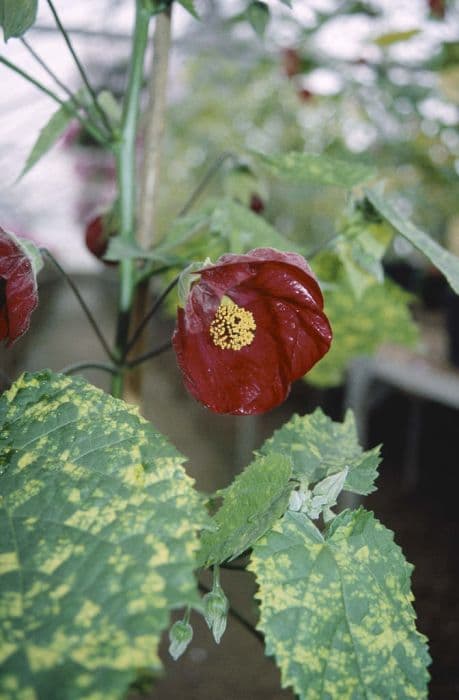
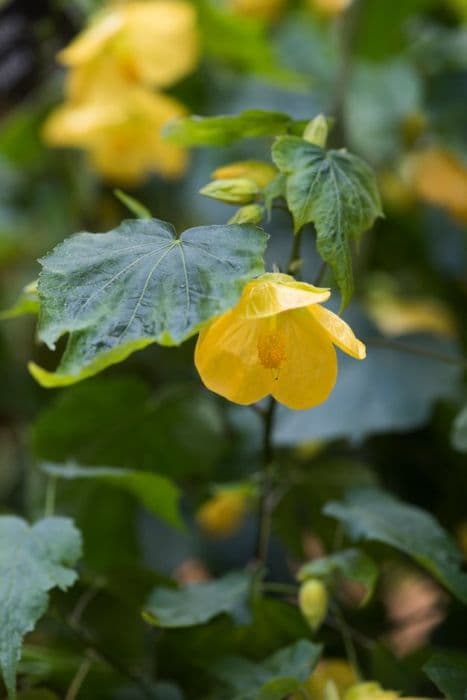
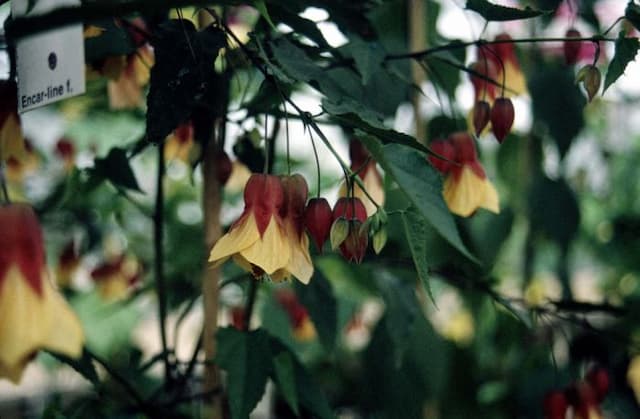
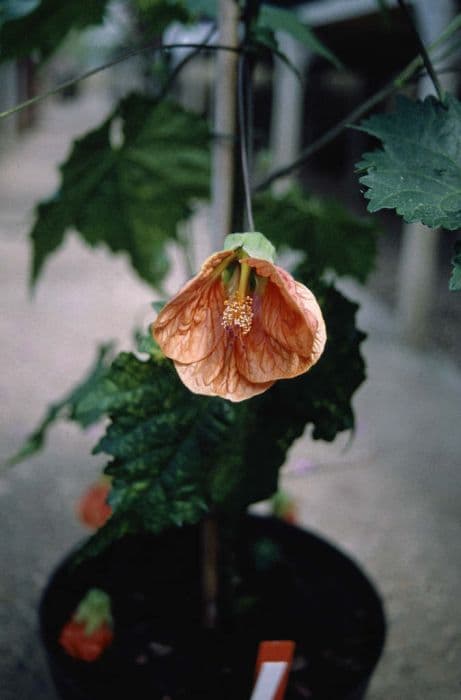
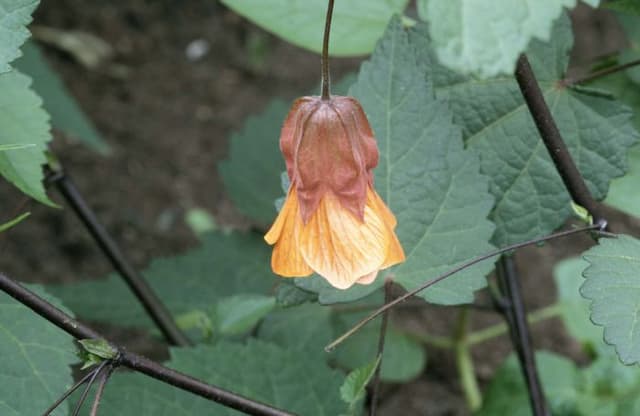

![Abutilon [Yellow Trumpet]](/_next/image?url=https%3A%2F%2Fplants-admin.emdemapps.com%2Fimages%2Fplants%2F%2Fimages%2F604b5caa8b4fb.png&w=640&q=75)


